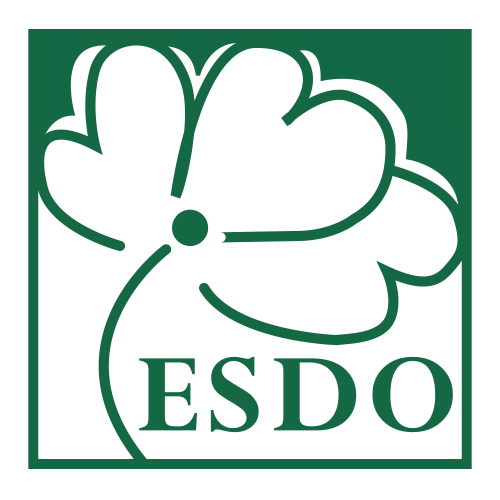Background
Mercury in waste, containing the free element and its compounds, and mercury containing-products continue to harm the environment even for many years after they have been disposed of. Bangladesh has no specific guidelines regarding the management of mercury waste, or how to safely manage the uses of either products or equipment that contains mercury or mercury compounds. The evaluation of mercury emission, therefore, is required to assess new potential and existing sources of the mercury emission as a result of the use of mercury and mercury-containing products. The study was commissioned to check the availability of mercury free alternatives, as a means to gauge the country’s preparedness towards the phase out of mercury added products.
Mercury Added products in Bangladesh
Mercury is recognized as a toxic and persistent element. In Bangladesh, Electrical and electronic devices, switches (including certain thermostats) and relays, measuring and control equipment, energy-efficient fluorescent light bulbs, paints, batteries and dental amalgam, laboratory equipment, cosmetics, pharmaceuticals, jewelry items release mercury into the environment when broken or improperly disposed. Per year, 14,772 kg mercury releases into the environment from all mercury added products. If spilled, mercury absorbs into many materials while slowly evaporating into the air over time, allowing for exposure. The Minamata Convention on Mercury is a global agreement to protect human health and the environment from the adverse effects of mercury.
Consequences of Mercury Added products
It is documented that mercury has serious impacts on environment and sequentially on human health. All forms of mercury can be accumulated in organisms. However, methylmercury is taken up at a faster rate than other forms and bioaccumulates to a greater extent. Fish appear to bind methylmercury strongly, nearly 100 percent of mercury that bioaccumulates in predator fish is methylmercury. Most of the methylmercury in fish tissue is covalently bound to protein sulfhydryl groups. This binding results in a long half-life for elimination (about two years). As a consequence, there is a selective enrichment of methylmercury (relative to inorganic mercury) as one moves from one trophic level to the next higher trophic level. Fish are the main source of food for many birds and other animals, and mercury can seriously damage the health of these species. Loons, eagles, otters, mink, kingfishers and ospreys eat large quantities of fish. Because these predators rely on speed and coordination to obtain food, mercury may be particularly hazardous to these animals.
Study Method
Key informant interviews were held with key suppliers/distributers and consumers of the target products under study to ascertain their sources, and quantities used, as well as the preference factors determining type of product used. The data was corroborated with Key Informants from government agencies such as Ministry of Commerce (Bangladesh), non state actors such as the Bangladesh Cosmetics & Toiletries Manufacturers Association, Bangladesh Cosmetics and Toiletries Importers Association.
Scenario of Significant Mercury Added Products
By compiling data from Questionnaires survey, the study managed to estimate the quantities of significant murcury added products imported into the country in the year 2017/2018.
| Product | Quantities Produced/Imported | Quantities Disposed | Estimated Hg input, Kg Hg/y |
| Thermometers | 4,771,428 (piece) | 3,340,000 (piece) | 551 |
| Sphygmomanometers | 16500 (piece) | 12000 (piece) | 960 |
| Bulbs | 35,292,739 (piece) | 29,998,828 (piece) | 382 |
| Switches and relays | 211,402,469 (unit) | 171,236,000 (unit) | 1404 |
| Batteries* | 7431050 (unit) | 7135080 | 17.8 |
| Cosmetics | 168 (Cream or soap sold, t/y) |
143 (Cream or soap sold, t/y) |
551 |
| Paints | 125615 (Paint sold, t/y) |
113,054 (Paint sold, t/y) |
4,748 |
*ESDO field survey, 2015
Mercury Free Alternatives in Bangladesh
The proprietors were asked if they stocked, or were aware of the availability of Mercury free alternatives to the products they were selling. Only 13.9% of distributors/retailers of measuring devices said they were not having mercury free alternatives to measuring devices. All the other product segments had readily available mercury free alternatives to their products. From the above scenario, it is understood that the country is already prepared to use the mercury free products.
| Products containing mercury | Alternatives to mercury |
| Button cell batteries | Lithium zinc, low-mercury alkaline batteries, rechargeable mercury and cadmium free versions |
| Thermometers | Electronic, infrared, chemical strip, and gallium, indium, tin and alcohol/spirit thermometer. Expansion or aneroid devices (high temperature ovens) |
| Lamps: fluorescent, high intensity and ultraviolet | Light emitting diode (LED) lamp, ordinary glow lights; low sodium vapor tubes (yellow); optical, high-energy, long-lasting lights |
| Electrical equipment | Digital probe and indicators in electrical equipment’s, fiber optics, solid state devices, mechanical switches |
| Sphygmomanometers | Aneroid or digital sphygmomanometers |
| Mercury compounds Mercury (II) oxide Mercury (II) chloride Mercury (II) sulfate Mercury iodide |
Copper catalyst Magnesium chloride/sulfuric acid Silver nitrate/potassium sulfate/chromium-(III) Sulfate Phenate method |
References
Mercury Product Inventory Report 2015, ESDO


